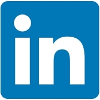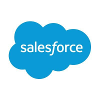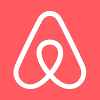Origin:
https://medium.com/@XiaohanZeng/i-interviewed-at-five-top-companies-in-silicon-valley-in-five-days-and-luckily-got-five-job-offers-25178cf74e0f
In
the five days from July 24th to 28th 2017, I interviewed at LinkedIn,
Salesforce Einstein, Google, Airbnb, and Facebook, and got all five job
offers.
It
was a great experience, and I feel fortunate that my efforts paid off,
so I decided to write something about it. I will discuss how I prepared,
review the interview process, and share my impressions about the five
companies.
How it started
I had been at Groupon for almost three years. It’s my first job, and I have been working with an amazing team and on awesome projects.
We’ve been building cool stuff, making impact within the company,
publishing papers and all that. But I felt my learning rate was being
annealed (read: slowing down) yet my mind was craving more. Also as a
software engineer in Chicago, there are so many great companies that all
attract me in the Bay Area.
Life
is short, and professional life shorter still. After talking with my
wife and gaining her full support, I decided to take actions and make my
first ever career change.
Preparation
Although
I’m interested in machine learning positions, the positions at the five
companies are slightly different in the title and the interviewing
process. Three are machine learning engineer (LinkedIn, Google,
Facebook), one is data engineer (Salesforce), and one is software
engineer in general (Airbnb). Therefore I needed to prepare for three
different areas: coding, machine learning, and system design.
Since I also have a full time job, it took me 2–3 months in total to prepare. Here is how I prepared for the three areas.
Coding
While
I agree that coding interviews might not be the best way to assess all
your skills as a developer, there is arguably no better way to tell if
you are a good engineer in a short period of time. IMO it is the
necessary evil to get you that job.
I
mainly used Leetcode and Geeksforgeeks for practicing, but Hackerrank
and Lintcode are also good places. I spent several weeks going over
common data structures and algorithms, then focused on areas I wasn’t
too familiar with, and finally did some frequently seen problems. Due to
my time constraints I usually did two problems per day.
Here are some thoughts:
- Practice, a lot. There is no way around it.
- But rather than doing all 600 problems on Leetcode, cover all types and spend time understanding each problem thoroughly. I did around 70 problems in total and felt that was enough for me. My thought is that if 70 problems isn’t helpful then you may not be doing it right and 700 won’t be helpful either.
- Go for the hardest ones. After those the rest all become easy.
- If stuck on one problem for over two hours, check out the solutions. More time might not be worth it.
- After solving one problem, check out the solutions. I was often surprised by how smart and elegant some solutions are, especially the Python one-liners.
- Use a language that you are most familiar with and that is common enough to be easily explained to your interviewer.
System design
This
area is more closely related to the actual working experience. Many
questions can be asked during system design interviews, including but
not limited to system architecture, object oriented design,database
schema design,distributed system design,scalability, etc.
There
are many resources online that can help you with the preparation. For
the most part I read articles on system design interviews, architectures
of large-scale systems, and case studies.
Here are some resources that I found really helpful:
- http://blog.gainlo.co
- http://horicky.blogspot.com
- https://www.hiredintech.com/classrooms/system-design/lesson/52
- http://www.lecloud.net/tagged/scalability
- http://tutorials.jenkov.com/software-architecture/index.html
- http://highscalability.com/
Although system design interviews can cover a lot of topics, there are some general guidelines for how to approach the problem:
- Understand the requirements first, then lay out the high-level design, and finally drill down to the implementation details. Don’t jump to the details right away without figuring out what the requirements are.
- There are no perfect system designs. Make the right trade-off for what is needed.
With
all that said, the best way to practice for system design interviews is
to actually sit down and design a system, i.e. your day-to-day work.
Instead of doing the minimal work, go deeper into the tools, frameworks,
and libraries you use. For example, if you use HBase, rather than
simply using the client to run some DDL and do some fetches, try to
understand its overall architecture, such as the read/write flow, how
HBase ensures strong consistency, what minor/major compactions do, and
where LRU cache and Bloom Filter are used in the system. You can even
compare HBase with Cassandra and see the similarities and differences in
their design. Then when you are asked to design a distributed key-value
store, you won’t feel ambushed.
Many
blogs are also a great source of knowledge, such as Hacker Noon and
engineering blogs of some companies, as well as the official
documentation of open source projects.
The most important thing is to keep your curiosity and modesty. Be a sponge that absorbs everything it is submerged into.
Machine learning
Machine learning interviews can be divided into two aspects, theory and product design.
Unless
you are have experience in machine learning research or did really well
in your ML course, it helps to read some textbooks. Classical ones such
as the Elements of Statistical Learning and Pattern Recognition and
Machine Learning are great choices, and if you are interested in
specific areas you can read more on those.
Make
sure you understand basic concepts such as bias-variance trade-off,
overfitting, gradient descent, L1/L2 regularization,Bayes
Theorem,bagging/boosting,collaborative filtering,dimension reduction,
etc. Familiarize yourself with common formulas such as Bayes Theorem and
the derivation of popular models such as logistic regression and SVM.
Try to implement simple models such as decision trees and K-means
clustering. If you put some models on your resume, make sure you
understand it thoroughly and can comment on its pros and cons.
For ML product design, understand the general process of building a ML product. Here’s what I tried to do:
- Figure out what the objective is: prediction, recommendation, clustering, search, etc.
- Pick the right algorithm: supervised vs unsupervised, classification vs regression, generalized linear model / decision tree / neural network / etc. Be able to reason about the choice.
- Pick / engineer relevant features based on available data.
- Pick metrics for model performance.
- Optionally, comment on how to optimize the model for production.
Here
I want to emphasize again on the importance of remaining curious and
learning continuously. Try not to merely using the API for Spark MLlib
or XGBoost and calling it done, but try to understand why stochastic
gradient descent is appropriate for distributed training, or understand
how XGBoost differs from traditional GBDT, e.g. what is special about
its loss function, why it needs to compute the second order derivative,
etc.
The interview process
I
started by replying to HR’s messages on LinkedIn, and asking for
referrals. After a failed attempt at a rock star startup (which I will
touch upon later), I prepared hard for several months, and with help
from my recruiters, I scheduled a full week of onsites in the Bay Area. I
flew in on Sunday, had five full days of interviews with around 30
interviewers at some best tech companies in the world, and very luckily,
got job offers from all five of them.
Phone screening
All
phone screenings are standard. The only difference is in the duration:
For some companies like LinkedIn it’s one hour, while for Facebook and
Airbnb it’s 45 minutes.
Proficiency
is the key here, since you are under the time gun and usually you only
get one chance. You would have to very quickly recognize the type of
problem and give a high-level solution. Be sure to talk to the
interviewer about your thinking and intentions. It might slow you down a
little at the beginning, but communication is more important than
anything and it only helps with the interview. Do not recite the
solution as the interviewer would almost certainly see through it.
For
machine learning positions some companies would ask ML questions. If
you are interviewing for those make sure you brush up your ML skills as
well.
To
make better use of my time, I scheduled three phone screenings in the
same afternoon, one hour apart from each. The upside is that you might
benefit from the hot hand and the downside is that the later ones might
be affected if the first one does not go well, so I don’t recommend it
for everyone.
One
good thing about interviewing with multiple companies at the same time
is that it gives you certain advantages. I was able to skip the second
round phone screening with Airbnb and Salesforce because I got the
onsite at LinkedIn and Facebook after only one phone screening.
More
surprisingly, Google even let me skip their phone screening entirely
and schedule my onsite to fill the vacancy after learning I had four
onsites coming in the next week. I knew it was going to make it
extremely tiring, but hey, nobody can refuse a Google onsite invitation!
Onsite
LinkedIn

This
is my first onsite and I interviewed at the Sunnyvale location. The
office is very neat and people look very professional, as always.
The
sessions are one hour each. Coding questions are standard, but the ML
questions can get a bit tough. That said, I got an email from my HR
containing the preparation material which was very helpful, and in the
end I did not see anything that was too surprising. I heard the rumor
that LinkedIn has the best meals in the Silicon Valley, and from what I
saw if it’s not true, it’s not too far from the truth.
Acquisition
by Microsoft seems to have lifted the financial burden from LinkedIn,
and freed them up to do really cool things. New features such as videos
and professional advertisements are exciting. As a company focusing on
professional development, LinkedIn prioritizes the growth of its own
employees. A lot of teams such as ads relevance and feed ranking are
expanding, so act quickly if you want to join.
Salesforce Einstein

Rock
star project by rock star team. The team is pretty new and feels very
much like a startup. The product is built on the Scala stack, so type
safety is a real thing there! Great talks on the Optimus Prime library
by Matthew Tovbin at Scala Days Chicago 2017 and Leah McGuire at Spark
Summit West 2017.
I
interviewed at their Palo Alto office. The team has a cohesive culture
and work life balance is great there. Everybody is passionate about what
they are doing and really enjoys it. With four sessions it is shorter
compared to the other onsite interviews, but I wish I could have stayed
longer. After the interview Matthew even took me for a walk to the HP
garage :)
Google

Absolutely
the industry leader, and nothing to say about it that people don’t
already know. But it’s huge. Like, really, really HUGE. It took me 20
minutes to ride a bicycle to meet my friends there. Also lines for food
can be too long. Forever a great place for developers.
I interviewed at one of the many buildings on the Mountain View campus, and I don’t know which one it is because it’s HUGE.
My
interviewers all look very smart, and once they start talking they are
even smarter. It would be very enjoyable to work with these people.
One
thing that I felt special about Google’s interviews is that the
analysis of algorithm complexity is really important. Make sure you
really understand what Big O notation means!
Airbnb

Fast
expanding unicorn with a unique culture and arguably the most beautiful
office in the Silicon Valley. New products such as Experiences and
restaurant reservation, high end niche market, and expansion into China
all contribute to a positive prospect. Perfect choice if you are risk
tolerant and want a fast growing, pre-IPO experience.
Airbnb’s
coding interview is a bit unique because you’ll be coding in an IDE
instead of whiteboarding, so your code needs to compile and give the
right answer. Some problems can get really hard.
And
they’ve got the one-of-a-kind cross functional interviews. This is how
Airbnb takes culture seriously, and being technically excellent doesn’t
guarantee a job offer. For me the two cross functionals were really
enjoyable. I had casual conversations with the interviewers and we all
felt happy at the end of the session.
Overall
I think Airbnb’s onsite is the hardest due to the difficulty of the
problems, longer duration, and unique cross-functional interviews. If
you are interested, be sure to understand their culture and core values.
Facebook

Another
giant that is still growing fast, and smaller and faster-paced compared
to Google. With its product lines dominating the social network market
and big investments in AI and VR, I can only see more growth potential
for Facebook in the future. With stars like Yann LeCun and Yangqing Jia,
it’s the perfect place if you are interested in machine learning.
I interviewed at Building 20, the one with the rooftop garden and ocean view and also where Zuckerberg’s office is located.
I’m
not sure if the interviewers got instructions, but I didn’t get clear
signs whether my solutions were correct, although I believed they were.
By
noon the prior four days started to take its toll, and I was having a
headache. I persisted through the afternoon sessions but felt I didn’t
do well at all. I was a bit surprised to learn that I was getting an
offer from them as well.
Generally
I felt people there believe the company’s vision and are proud of what
they are building. Being a company with half a trillion market cap and
growing, Facebook is a perfect place to grow your career at.
Negotiation
This is a big topic that I won’t cover in this post, but I found this article to be very helpful.
Some things that I do think are important:
- Be professional.
- Know your leverages.
- Be genuinely interested in the teams and projects.
- Keep your patience and confidence.
- Be determined but polite.
- Never lie.
My failed interview with Databricks

All
successes start with failures, including interviews. Before I started
interviewing for these companies, I failed my interview at Databricks in
May.
Back
in April, Xiangrui contacted me via LinkedIn asking me if I was
interested in a position on the Spark MLlib team. I was extremely
thrilled because 1) I use Spark and love Scala, 2) Databricks engineers
are top-notch, and 3) Spark is revolutionizing the whole big data world.
It is an opportunity I couldn’t miss, so I started interviewing after a
few days.
The
bar is very high and the process is quite long, including one
pre-screening questionnaire, one phone screening, one coding assignment,
and one full onsite.
I managed to get the onsite invitation, and visited their office in downtown San Francisco, where Treasure Island can be seen.
My
interviewer were incredibly intelligent yet equally modest. During the
interviews I often felt being pushed to the limits. It was fine until
one disastrous session, where I totally messed up due to insufficient
skills and preparation, and it ended up a fiasco. Xiangrui was very kind
and walked me to where I wanted to go after the interview was over, and
I really enjoyed talking to him.
I
got the rejection several days later. It was expected but I felt
frustrated for a few days nonetheless. Although I missed the opportunity
to work there, I wholeheartedly wish they will continue to make greater
impact and achievements.
Afterthoughts
- Life is short. Professional life is shorter. Make the right move at the right time.
- Interviews are not just interviews. They are a perfect time to network and make friends.
- Always be curious and learn.
- Negotiation is important for job satisfaction.
- Getting the job offer only means you meet the minimum requirements. There are no maximum requirements. Keep getting better.
From
the first interview in May to finally accepting the job offer in late
September, my first career change was long and not easy.
It
was difficult for me to prepare because I needed to keep doing well at
my current job. For several weeks I was on a regular schedule of
preparing for the interview till 1am, getting up at 8:30am the next day
and fully devoting myself to another day at work.
Interviewing
at five companies in five days was also highly stressful and risky, and
I don’t recommend doing it unless you have a very tight schedule. But
it does give you a good advantage during negotiation should you secure
multiple offers.
I’d
like to thank all my recruiters who patiently walked me through the
process, the people who spend their precious time talking to me, and all
the companies that gave me the opportunities to interview and extended
me offers.
Lastly
but most importantly, I want to thank my family for their love and
support — my parents for watching me taking the first and every step, my
dear wife for everything she has done for me, and my daughter for her
warming smile.
Thanks for reading through this long post.
Xiaohan Zeng
10/22/17
PS:
Since the publication of this post, it has (unexpectedly) received some
attention. I would like to thank everybody for the congratulations and
shares, and apologize for not being able to respond to each of them.
This post has been translated into some other languages:
It has been reposted in Tech In Asia.
Breaking Into Startups invited me to a live video streaming, together with Sophia Ciocca.
CoverShr did a short QnA with me.
Comments
Post a Comment
https://gengwg.blogspot.com/